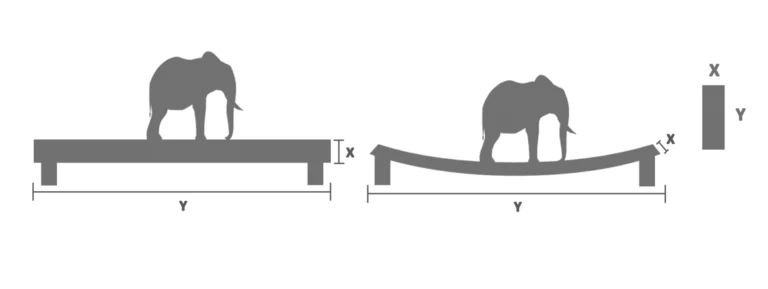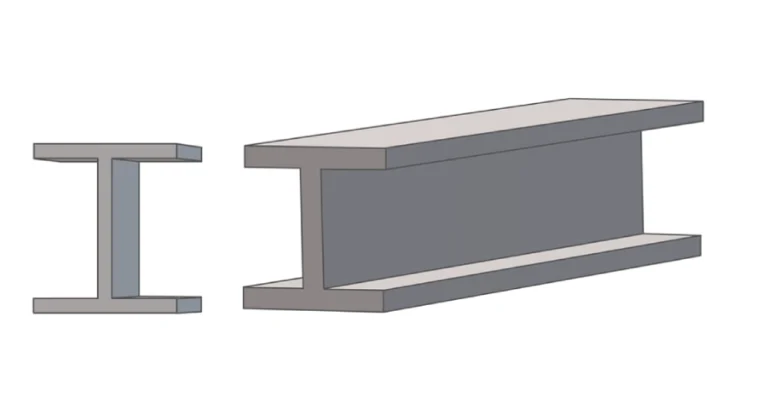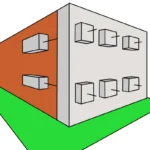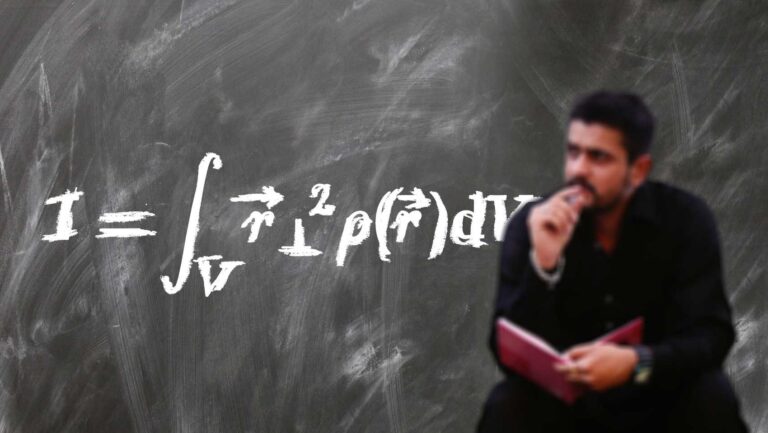Engineering and architecture are disciplines that have evolved over centuries, constantly seeking to improve the efficiency and safety of the structures we build. One fundamental concept in this field is the moment of inertia, a property that, although not always fully understood, plays a crucial role in the stability and performance of constructions. This parameter, often overlooked by the general public, is essential for understanding how loads are distributed and resisted in buildings, bridges, and other civil works.
In this article, we will delve into the importance of moment of inertia in constructions and how understanding it can lead to safer and more efficient designs.
What is Moment of Inertia?

To understand its significance in constructions, we must first define what it is. The moment of inertia, commonly represented as “I,” is a geometric property of a cross-sectional area of an object. In the context of construction, this cross-sectional area can be a steel profile, a concrete beam, a column, or any other structural element. The moment of inertia is calculated in relation to a rotation axis and measures the object’s resistance to changing its rotational state when a moment (a force tending to rotate it) is applied.
Mathematically, the moment of inertia is expressed as:

In simpler terms, it is a measure of how mass is distributed in a cross-sectional area concerning a rotation axis. The larger the moment of inertia, the more resistant the section is to torsion and changes in its rotational state.
To better understand the moment of inertia, consider a simple example. Imagine a steel beam extending from a support point A to another support point B. If the beam has a uniform mass distribution along its length, its moment of inertia will differ from a beam with the same mass but an irregular mass distribution. The moment of inertia is a property that measures this difference and its impact on the stability of the structure.

Moment of Inertia and Structural Stability
Structural stability is one of the most critical aspects in the design and construction of buildings and bridges. The moment of inertia plays a fundamental role in determining a structure’s ability to bear loads and resist external forces, such as wind and seismic vibrations.
A higher moment of inertia means that mass is more efficiently distributed around the rotation axis, resulting in increased resistance to deformation and breakage. On the other hand, a structure with a lower moment of inertia may be more prone to bending and torsion under heavy loads. This highlights the importance of calculating and considering the moment of inertia during the design phase of any construction project.
To further discuss inertia, it is necessary to understand what torsion is and why it is crucial to consider it when making calculations for a building:
“One of the most critical aspects of structural engineering is torsional strength.” Torsion is a force that tends to rotate an object around an axis. In constructions, this force can manifest in elements like columns, beams, and bridges, especially when subjected to uneven loads or changes in environmental conditions.
One of the most important reasons to consider torsion in building calculations is structural safety. When a structure is subjected to significant torsional forces, it may experience undesired deformations or even collapse. If torsion is not taken into account, there is a risk that the structure may not be strong enough to withstand torsional forces, jeopardizing the safety of people using it.
Efficient Structural Design

Efficient structural design is another key aspect in the importance of moment of inertia in constructions. Engineers constantly seek ways to optimize the use of materials and resources in building construction. A higher moment of inertia allows less material to be used to achieve the same torsional resistance, resulting in more economical and sustainable structures.
In practice, this means that engineers look for shapes and profiles that maximize the moment of inertia concerning the amount of material used. For example, “I”-shaped beams are a common choice in construction due to their high efficiency in terms of moment of inertia. These beams have greater torsional resistance compared to simpler profiles, making them ideal for supporting heavy loads without requiring an excessive amount of steel or concrete.
Seismic-Resistant Design and Moment of Inertia
Torsional resistance and moment of inertia are also crucial considerations in the seismic-resistant design of structures. Regions prone to earthquakes experience significant horizontal forces that can exert torsion on buildings and bridges. To ensure the safety of people and the integrity of constructions, engineers incorporate the concept of moment of inertia into their designs.
In these seismic areas, it is common to use structural systems that distribute and dissipate earthquake energy throughout a structure. These systems often include dampers and energy dissipation devices that interact with the structure’s torsional resistance, making moment of inertia an essential consideration.
Conclusion
In summary, moment of inertia is a fundamental property in construction and civil engineering. Its proper understanding and application are essential to ensure the stability and safety of the structures we design and build. Moreover, moment of inertia also plays a significant role in optimizing designs and seeking economical and sustainable solutions.
As technology continues to advance, we can expect to see more innovations in how moment of inertia is used in construction. This will lead to safer, more efficient, and sustainable structure designs, benefiting both the construction industry and the environment. Therefore, moment of inertia will continue to be a key concept in the ongoing pursuit of stronger and more resilient constructions.








Related
Reinforcement Steels
Metal Structures
What Are Trusses? – Civil Engineering